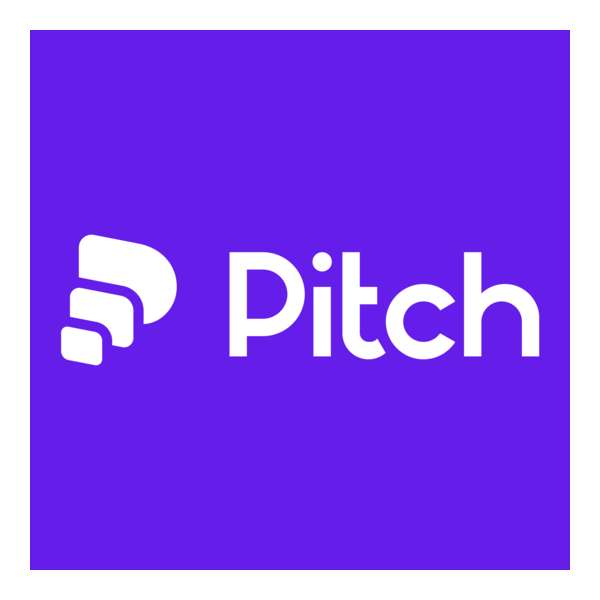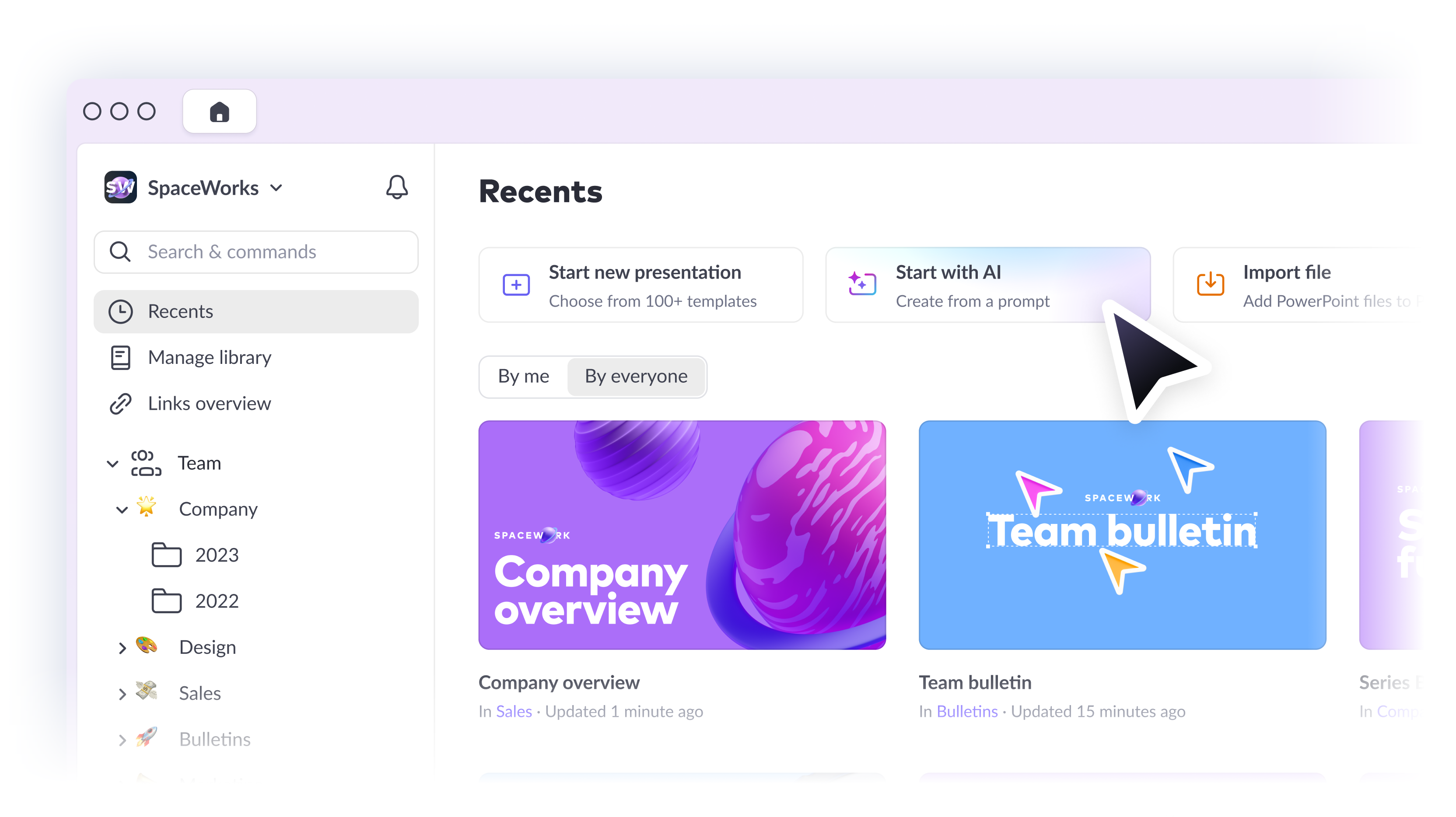
Pitch: Complete Buyer's Guide
AI-powered presentation platform delivering brand consistency and collaborative efficiency for business teams.
Pitch represents a middle-ground solution in the evolving AI presentation landscape, targeting organizations struggling with presentation consistency across teams and projects. The platform offers context-aware design suggestions and real-time collaboration features, positioning between fully manual presentation creation and experimental AI-native platforms that may lack enterprise-grade reliability.
Market Position & Maturity
Market Standing
Pitch occupies a strategic middle position in the competitive AI presentation landscape, differentiating from both traditional platforms adding AI features and experimental AI-native solutions. The platform targets the gap between AI-native platforms (Gamma, Tome) that excel in narrative structuring but may lack enterprise brand control capabilities, and traditional platforms with AI (Microsoft PowerPoint with Copilot) that offer familiar interfaces but limited native AI design intelligence.
Company Maturity
The platform demonstrates functional AI capabilities for layout automation and brand compliance, though comprehensive satisfaction analysis requires systematic review aggregation that current public data doesn't support. This evidence limitation affects assessment confidence for enterprise-level decisions, indicating a company still building its market validation foundation.
Growth Trajectory
The company's positioning targets the middle-ground approach that may appeal to organizations requiring AI assistance without sacrificing brand control. This strategic focus addresses the market reality where survey data indicates many agencies continue using traditional tools for final client reviews, while seeking AI efficiency for internal workflows.
Industry Recognition
Pitch's market position reflects the broader industry trend where successful deployments show measurable productivity gains, with some organizations reporting 30-45% reductions in design time compared to traditional methods. However, the platform faces the same industry-wide challenge where revision cycle requirements may increase by 15% in some implementations.
Longevity Assessment
Pitch's strategic positioning between pure AI generation and traditional design tools reflects market maturity expectations that vary significantly across analyst perspectives. The platform's focus on structured AI assistance over experimental AI generation aligns with enterprise requirements for controlled AI deployment, though specific performance advantages require verification through direct evaluation.
Proof of Capabilities
Market Validation
The platform addresses documented market needs where 42% of tech enterprises report using AI presentation tools for internal materials, while only 12% adopt for client-facing presentations due to quality control concerns. Pitch's brand consistency engine specifically targets this adoption gap, though quantified outcomes require verification through independent customer validation.
AI Technology
Pitch's AI functionality centers on three core technological areas that differentiate it from both traditional presentation tools and purely AI-native platforms. The platform's context-aware design engine analyzes brand guidelines and generates compliant layouts, though specific accuracy metrics remain limited in publicly accessible documentation.
Architecture
The platform's Layout Intelligence system provides automated slide composition based on content analysis and brand requirements. This goes beyond simple template selection, using machine learning algorithms that learn and improve from your data over time to understand content hierarchy and visual relationships. The system connects seamlessly with your existing business systems through API integrations, enabling real-time access to brand assets and content libraries.
Primary Competitors
AI-Native Platforms like Gamma and Tome provide sophisticated narrative structuring with reported 45% faster narrative structuring, though users note manual data verification remains necessary and content recycling patterns across presentations may be concerns. Design-Focused AI Tools such as Beautiful.ai show reported 60% time savings in layout generation, though users note challenges with custom branding requirements and 28% longer revision cycles.
Competitive Advantages
Pitch differentiates through brand guideline integration and collaborative features, positioning between pure AI generation and traditional design tools. This middle-ground approach may appeal to organizations requiring AI assistance without sacrificing brand control, addressing the documented challenge where 42% of tech enterprises use AI presentation tools for internal materials but only 12% for client-facing presentations due to quality control concerns.
Market Positioning
Pitch targets enterprise teams valuing structured AI assistance over experimental AI generation, addressing the vendor performance gap that creates challenges for design professionals seeking authentic AI capabilities versus marketing-driven tool selection. The platform's focus on AI-human collaboration rather than full automation reflects professional requirements for creative control and brand consistency.
Win/Loss Scenarios
Choose Pitch when brand consistency and team collaboration are priorities over pure AI automation, particularly for mid-market to enterprise organizations with established design guidelines. Consider alternatives for highly creative presentations requiring maximum design flexibility, budget-constrained implementations seeking basic AI assistance, or organizations prioritizing experimental AI generation over structured brand control.
Key Features

Pros & Cons
Use Cases
Featured In Articles
Comprehensive analysis of AI Presentation Makers for AI Design for AI Design professionals. Expert evaluation of features, pricing, and implementation.
How We Researched This Guide
About This Guide: This comprehensive analysis is based on extensive competitive intelligence and real-world implementation data from leading AI vendors. StayModern updates this guide quarterly to reflect market developments and vendor performance changes.
40+ verified sources per analysis including official documentation, customer reviews, analyst reports, and industry publications.
- • Vendor documentation & whitepapers
- • Customer testimonials & case studies
- • Third-party analyst assessments
- • Industry benchmarking reports
Standardized assessment framework across 8 key dimensions for objective comparison.
- • Technology capabilities & architecture
- • Market position & customer evidence
- • Implementation experience & support
- • Pricing value & competitive position
Research is refreshed every 90 days to capture market changes and new vendor capabilities.
- • New product releases & features
- • Market positioning changes
- • Customer feedback integration
- • Competitive landscape shifts
Every claim is source-linked with direct citations to original materials for verification.
- • Clickable citation links
- • Original source attribution
- • Date stamps for currency
- • Quality score validation
Analysis follows systematic research protocols with consistent evaluation frameworks.
- • Standardized assessment criteria
- • Multi-source verification process
- • Consistent evaluation methodology
- • Quality assurance protocols
Buyer-focused analysis with transparent methodology and factual accuracy commitment.
- • Objective comparative analysis
- • Transparent research methodology
- • Factual accuracy commitment
- • Continuous quality improvement
Quality Commitment: If you find any inaccuracies in our analysis on this page, please contact us at research@staymodern.ai. We're committed to maintaining the highest standards of research integrity and will investigate and correct any issues promptly.